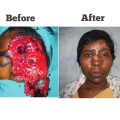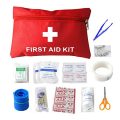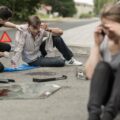Dangerous actions are actions that can occur anywhere and at any time, putting our lives and the lives of others in danger. For children, recognizing and avoiding dangerous actions is essential to staying safe. In this article, we will explore common places where dangerous actions can happen and what kids can do to stay safe.
What Are Dangerous Actions?
Dangerous actions are actions that can result in serious injuries or even loss of life. They can happen in various places, but children often encounter them due to their playful and sometimes careless nature.
Common Places for Dangerous Actions
- At Home
- In the Sitting Room: Running on tiles can lead to slips and serious injuries.
- In the Kitchen: Playing with fire can result in burns.
- In the Dining Area: Climbing on tables and chairs can lead to falls.
- In the Bedroom: Jumping on the bed can cause head injuries.
- In the Bathroom: Running on wet tiles or playing in a filled bathtub can lead to accidents, including drowning.
- At School
- On Stairs: Running on stairs can result in falls.
- Around the School Compound: Running recklessly can lead to accidents.
- On the Sports Field and Playground: Rough play can result in falls and injuries.
- In Class: Playing with pens and pencils can lead to eye injuries.
- In the Office
While parents may take their children to work, it’s not a suitable place for kids. Dangerous actions can include:
- Playing with Office Supplies: Playing with pens can result in skin injuries.
- Playing with Office Furniture: Playing with chairs can lead to falls.
- Messing with Office Equipment: Spillage from water dispensers can cause falls, damage important documents, and even lead to electrical fires.
- On the Road
Children should be cautious on the road to avoid dangerous actions, such as:
- Running on the Road: Running on the road can lead to accidents with speeding vehicles.
- Attempting to Drive a Vehicle: Kids should never try to drive without a license due to the high risk of accidents and harm.
- Playing Near Gutter and Potholes: Playing near these can result in falls and injuries.
- In the House Compound
Children often play outside the house, and some activities can be dangerous:
- Climbing Trees: Falling from trees can cause serious injuries or even death.
- Throwing Stones: Throwing stones can lead to eye or head injuries, and in some cases, even unconsciousness.
- Reckless Play: Playing without caution or riding a bicycle recklessly can result in injuries.
What to Do When Witnessing Dangerous Actions
- Be Careful: Always be aware of your surroundings.
- Be Vigilant: Keep an eye out for potential dangers.
- Follow Road Signs: Pay attention to signs like “Children Crossing” and “Pedestrian Crossing.”
- Listen to Instructions: Follow rules and instructions from parents, teachers, and guardians.
- Read Precautions and Warnings: Before using anything, check for safety precautions and warnings.
- Use Safety Gear: When necessary, wear helmets, knee pads, or other safety gear.
What to Do When Witnessing Dangerous Actions Happening to Someone Else
- Ensure Safety: Make sure the person is safe and not in immediate danger.
- Check Breathing: Ensure the person is breathing.
- Stay Calm: Don’t panic and stay with the person in need.
- Calm the Victim: Try to keep the person calm and reassure them.
- Seek Medical Help: If there are no external injuries, take the person to the hospital for a check-up. If there are injuries, administer first aid and seek medical attention immediately.
In conclusion, recognizing and avoiding dangerous actions is crucial for children’s safety. By being aware of potential risks and following safety guidelines, children can protect themselves and others from harm. Always remember, safety first!
Contributed By: Annabel Otorkpa
(Head Girl Kelien International School)






